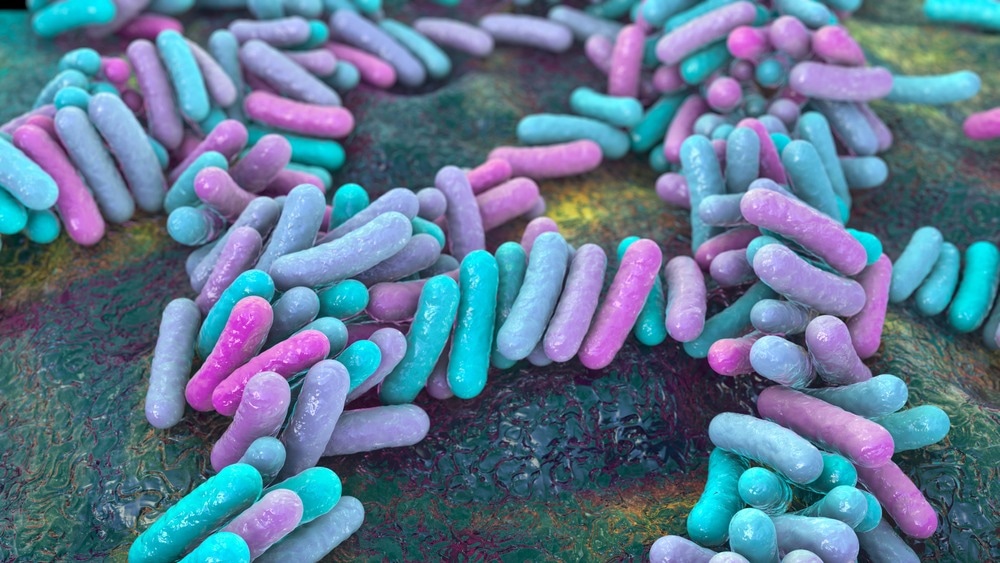In a recent study published in Science Translational Medicine, researchers reviewed the impact of the interactions between the respiratory microbiota and the immune system.
 Study: Understanding respiratory microbiome–immune system interactions in health and disease. Image Credit: Kateryna Kon/Shutterstock
Study: Understanding respiratory microbiome–immune system interactions in health and disease. Image Credit: Kateryna Kon/Shutterstock
Background
The human body houses over 100 trillion microorganisms. This huge collection of organisms, known as the microbiome, consists of various microbial communities that play a crucial role in sustaining health and modifying disease states.
During the shift between the intrauterine environment and the extrauterine environment, survival requires the maturation of the innate as well as adaptive immune systems. It has been demonstrated that the coevolving microbiome interacts with the immune system in positive and negative ways, considering colonization, host status, and microbial composition.
Interactions between the microbiome, the immune system, and the respiratory system
Localized lung habitats differ since the respiratory system includes different environments, such as the oral and nasal cavities, larynx, pharynx, bronchi, trachea, alveoli, and bronchioles. For instance, a temperature gradient exists between the near-ambient temperature of the oropharynx and the body's core temperature of the alveoli. The resident microbial population in the pulmonary system is maintained by balancing immigration and eliminating microbes.
Despite being a well-identified pathogen, Streptococcus pneumoniae is a common commensal found in the upper respiratory tract. Studies of mice colonized simultaneously with Haemophilus influenzae and S. pneumoniae developed an inflammatory environment characterized by high local proportions of C-X-C motif chemokine ligand 2 (CXCL2) and recruitment of neutrophils.
Notably, neither strain alone demonstrated this reaction. According to reports, the synergistic response depended on pneumolysin (Ply), a virulence component generated by S. pneumoniae that causes pore creation within eukaryotic cells. This indicates that S. pneumoniae alters the immune response against H. influenzae.
Exposing immune-stimulatory and nonpathogenic S. pneumoniae components, including pneumolysin (Ply), protected them from allergic airway illnesses. This was due to the increase in regulatory T cell (Treg)–mediated inhibition of natural killer T cells, T helper 2 (TH2) responses.
Neonatal and pediatric pulmonary conditions
Bronchopulmonary dysplasia
Bronchopulmonary dysplasia is a chronic and inflammatory lung condition affecting preterm newborns. Among preterm lungs, breathing induces inflammation owing to oxidative and mechanical stress.
In ureaplasma-positive babies with bronchopulmonary dysplasia, the tracheal aspirate fluid included elevated levels of inflammatory mediators, including interleukin (IL)-1, IL-6, and IL-8, and immune cells, such as alveolar macrophages and pulmonary neutrophils. However, the specific involvement of ureaplasma in the pathophysiology of this illness remains unknown.
During the initial 28 days of life, a significant reduction in bacterial diversity was observed in the tracheal aspirate fluid in preterm babies having bronchopulmonary dysplasia compared to infants who did not. Among adults who were born preterm and had bronchopulmonary dysplasia, 16S ribosomal ribonucleic acid (rRNA) detected a reduction in bacterial diversity along with an abundance of Bacteroidetes compared to those born preterm without the condition. These findings imply that early-life microbial dysbiosis may link the respiratory microbiome to the development of bronchopulmonary dysplasia and long-term respiratory health.
Asthma
The hygiene hypothesis posits that early microbial exposure might lessen the chance of developing atopies, such as asthma or allergies, throughout childhood or adulthood. Asthma pathologies include intermittent airway obstruction, bronchial hyperreactivity, airway remodeling, and mucus hyperproduction, which are frequently caused by type 2–polarized immune responses which might or might not be accompanied by eosinophilic inflammation.
Proteobacteria predominated in bronchoalveolar lavage samples and nasopharyngeal swabs obtained from adults and children with asthma, while Firmicutes were predominant in healthy controls. There have been reports of increased Haemophilus species in asthmatic patients, whereas H. influenzae was associated with an elevation in asthma as well as recurrent wheezing in the initial five years of life. Additionally, H. influenzae, S. pneumoniae, or Moraxella catarrhalis can increase asthma-related risk in any phase of life.
Chronic obstructive pulmonary disease (COPD)
COPD is described as persistent inflammation of the airway as well as bronchial remodeling, which alters the balance and structure of the gut and respiratory microbial populations. Exacerbation episodes were related to an increase in the relative proportion of Proteobacteria and a reduction in the relative proportion of Firmicutes as confirmed by 16S rRNA profiling of COPD patient samples. In a separate investigation, 16S rRNA profiling found Haemophilus and Moraxella as the genera with the highest relative proportion in COPD patients' respiratory samples.
Lung tumor
It is recognized that interactions between the microbiome and the immune system influence cancer genesis, progression, and therapy sensitivity. Nonetheless, the causality of this phenomenon is yet unknown. Studies have shown a shift from Firmicutes to Proteobacteria as the main bacterial taxonomy in bronchoalveolar lavage and salivary samples obtained from lung cancer patients. Capnocytophaga, Veillonella, and Selenomonas were significantly elevated in the saliva of patients diagnosed with adenocarcinoma or squamous cell carcinoma. Also, 16S rRNA gene profiling demonstrated an increase in the predominance of the genera Bergeyella and Haemophilus.
Conclusion
Overall, the study findings highlighted the relationship between early life colonization as well as community alterations and immunological development, disease, and health during adulthood, childhood, and infancy.
Advances in sequencing, bacterial culture, and ex vivo technologies to determine community composition, as well as functional genomics to understand the metabolism of particular microbiota, can assist the future study of the interaction between the human microbiome and the immune system.